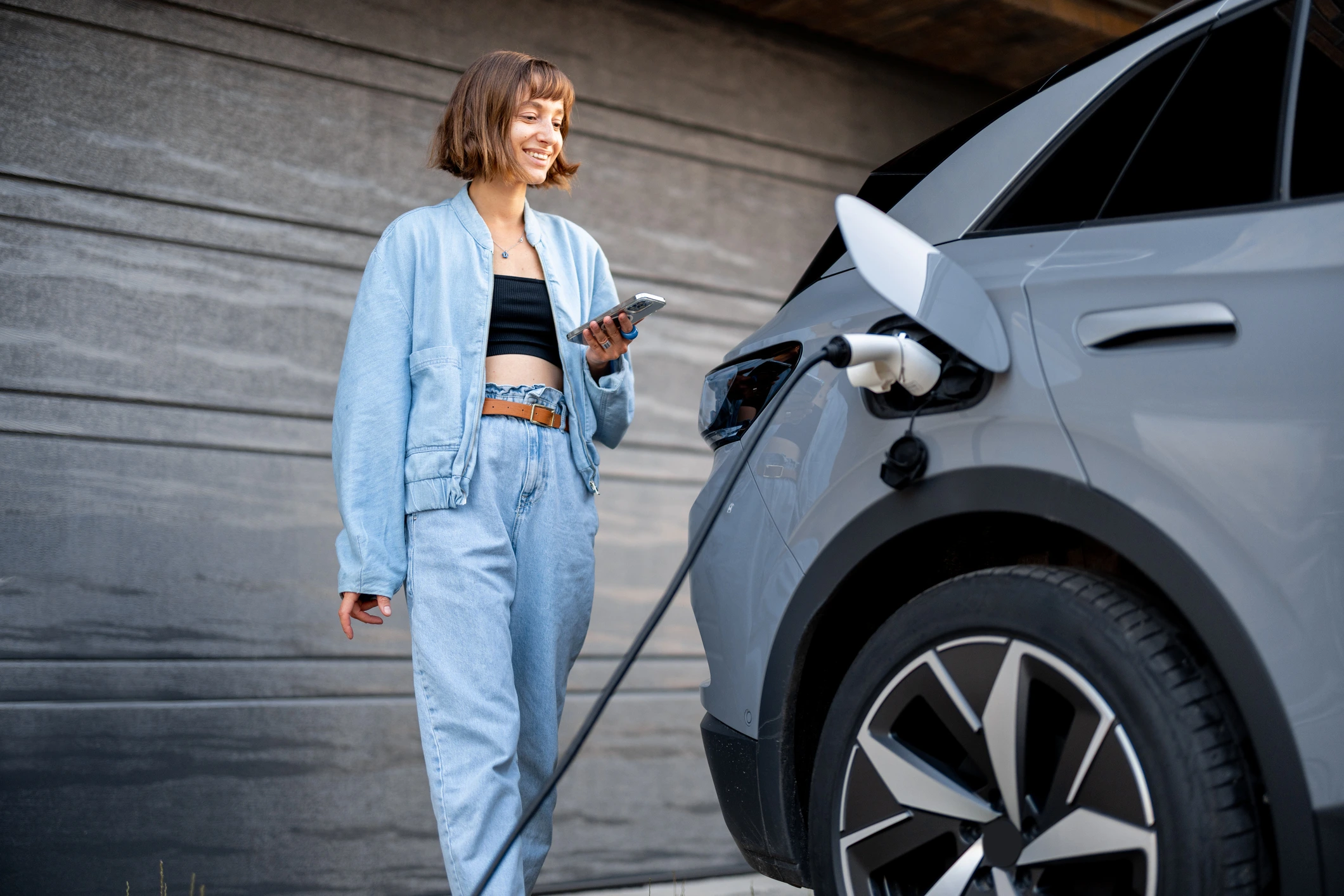June 2025
Are electric cars better for the environment?
Learn how EVs are better for the environment, even when factoring in manufacturing costs. We also share important considerations for charging your EV.

It’s a commonly held belief that trading in your petrol or diesel car for an electric vehicle (EV) can reduce your carbon footprint. Yet, with media reports highlighting the resource dependency of EVs, are electric cars really better for the environment?
Yes, they are. Electric vehicles emit far fewer lifetime emissions compared to petrol and diesel cars, even when taking into account production and electricity needed to charge the electric vehicle.
Read on to learn how and why electric cars are good for the environment, ways in which they stutter, and how to take environmentally-conscious living up a gear.
Key Takeaways: How EVs are Better for the Environment
Producing a battery for an electric vehicle uses a substantial amount of energy, but over an EV’s lifetime, the environmental benefits of using an EV rather than an internal combustion engine (ICE) outweigh the environmental cost of creating the battery.
Here’s a summary of the important ways EVs are better for the environment:
- EVs don’t produce tailpipe emissions, therefore reducing local pollutants and improving air quality
- EVs produce up to 30% less greenhouse gases (GHG) compared to petrol- and diesel-powered cars
- EVs are almost silent, reducing noise pollution
- Electricity continues to become greener, enhancing the green credentials of EVs
- EV batteries can be recycled, and are becoming increasingly environmentally friendly
Below, you’ll find a more detailed explanation of how EVs impact the environment.
What’s the Environmental Impact of an EV?
To understand how electric cars are good for the environment, we need to look at what’s involved across their entire life cycle.
Manufacturing an electric vehicle versus a regular vehicle
Electric vehicles and ICEs require natural resources for their production and vehicle assembly (and both rely on a significant amount of energy to do so).
Manufacturing an EV is more harmful to the environment than creating an ICE, primarily because an EV needs large lithium-ion batteries to operate. These batteries typically need lithium, cobalt and nickel (fossil fuels are used to mine these materials), and a large amount of water to be produced. This results in greater emissions to produce an EV than the production of petrol and diesel cars.
Fortunately, technology is advancing, and EV manufacturing factories are making more use of sustainable and recycled materials.
Present manufacturing issues aside, once you hit the road in an EV, it doesn’t take long for it to race past its traditional competitors.
Emissions of an EV versus petrol and diesel vehicles
The European Environment Agency published a study in 2020, comparing the average CO2 emissions of diesel cars, petrol cars and EVs. The table below outlines these findings.
Unlike petrol and diesel cars, EVs produce zero CO2 emissions. This is one reason why the UK Government intends to phase out the sale of new petrol and diesel cars in favour of EVs.
But what about the emissions of producing resource-laden EV batteries?
Even when we take into account the emissions produced during battery creation and assembly, EVs remain in poll position for the amount of emissions. The table below summarises Electric Living’s findings of the total carbon emissions it takes to produce diesel cars, petrol cars and EVs.
Let’s zoom out of carbon emissions to look at greenhouse gases (GHG). The US Environmental Protection Agency (EPA) signpost research that estimates emissions for a petrol car and an EV with a 300-mile range. This research predicts that petrol cars produce over twice the amount of GHG emissions as EVs over their lifetime, as shown in the table below.
The tables above illustrate the emissions of ICEs compared to EVs, and the picture is clear: when it comes to emissions, driving an electric vehicle is better for the environment than driving petrol- or diesel-powered engines.
Does this also mean that using electricity to power your car is greener than using fuel? Well, it depends on the source of your electricity.
The electricity source determines how green an EV is
Petrol and diesel are fossil fuels made from crude oil found deep in the Earth’s crust. So when we drive petrol- and diesel-powered cars, we’re burning fossil fuels.
EVs don’t directly burn fossil fuels, but if an electric car is charged by a grid that uses fossil fuels, it’ll be less environmentally friendly than an electric car that’s charged by renewable electricity.
At So Energy, we really care about the environment, and we know that many of our customers do, too. We’d love to be part of making your home greener with renewable energy solutions like solar panels or heat pumps. Get a solar quote here and join the heat pump waiting list.
The Role of Renewable Energy
Perhaps unsurprisingly, when EVs are charged using renewable energy sources, the environmental benefits of electric cars are enhanced.
Though fortunately, according to the US Environmental Protection Agency, even when an EV is charged using coal or natural gas (non-renewable energy sources), it’s still better for the environment because of “lower levels of greenhouse gases (GHGs) than an average new [petrol] car.”
Electric vehicles are set to become greener still as low-carbon and renewable energy solutions are adopted more widely. The EPA explains, “[when] more renewable energy sources like wind and solar are used to generate electricity, the total GHGs associated with EVs could be even lower.”
This is particularly promising for UK-based EV owners. The Guardian reported that the UK recorded the cleanest electricity ever in 2024, with 58% of electricity production coming from low-carbon sources. Taking a closer look at these sources, the National Energy System Operator found wind to be the most significant single source of electricity (comprising 30%), with renewables generating more than 50% of the electricity used over the entire year.
In the coming years, we can expect the electricity flowing through an EV’s charging cable to become even cleaner in the coming years.
Disposing of, and Recycling, Your EV’s Battery
The lithium-ion battery in your electric car will probably last for 10 to 20 years. Currently, recycling these batteries is difficult (it’s estimated that about 5% of lithium-ion batteries are recycled), partly because they contain hazardous materials. As a result, many of them end up as landfill, risking damage to ecosystems and public health.
Fortunately, there is progress on how we can reuse and recycle EV batteries. This year, the BBC shared insights into how companies worldwide are making headway in the recycling of used EV batteries, despite disposal challenges.
Another solution to this problem is new battery technologies like sodium-ion batteries. Unlike lithium-ion batteries, which require a variety of rare precious materials, sodium-ion batteries consist of much more common materials, including, in some instances, table salt and biomass, making them a much more environmentally friendly solution. Once production of sodium-ion batteries ramps up, they might even overtake lithium-ion batteries as the main way people power portable devices.
Strategies to Reduce Your Carbon Footprint
If you’re not ready to invest in an electric car, there are other strategies you can follow to reduce your carbon footprint.
The WWF (World Wildlife Federation) shares these handy tips:
- Change how much you buy and who you buy from – opt for secondhand shops and local produce where possible
- Change the way you travel – if an EV’s not right for you just yet, aim to walk or take public transport when possible
- Reduce your energy use and switch to renewable energy
Switch to Renewable Energy with So Energy
Whether you’re considering switching to renewable energy to power your home or seeking to reduce the cost and improve the speed of charging your EV at home, reach out to our team. We’ll guide you through the renewable energy solutions we offer to reduce your carbon footprint, including solar panels, heat pumps, and 100% renewable energy tariffs.








